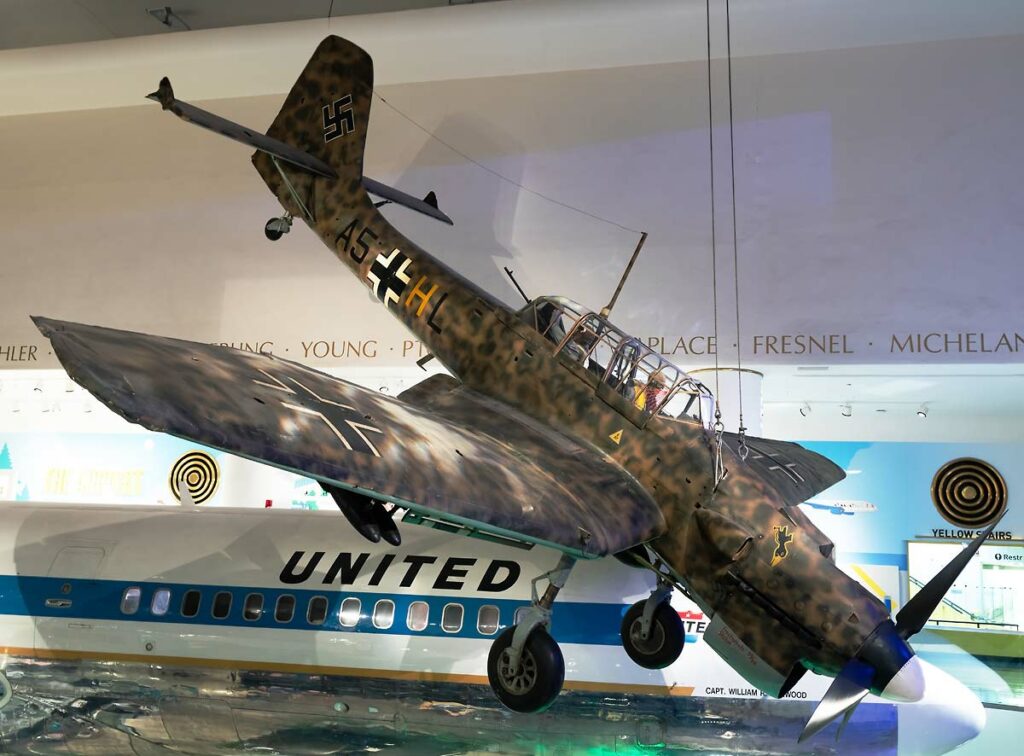The Junkers Ju 87 Stuka, a German dive bomber, was notorious for its accuracy, dive siren, and robust design during WWII.
This article provides a comprehensive overview of the Junkers Ju 87 Stuka, a key German dive bomber of World War II. We explore its development, design, performance, and military role. The Ju 87’s development is contextualized within the interwar period, highlighting its strategic purpose and design objectives. The aircraft’s design features are examined in detail, including its distinctive gull-wing shape and dive capabilities. Performance metrics are analyzed, offering comparisons with contemporaries. The Ju 87’s extensive combat use, its armament, and operational effectiveness are discussed, concluding with an assessment of its impact and legacy in military aviation.
The Junkers Ju 87 Stuka, a dive bomber developed by Germany in the 1930s, became one of the most iconic aircraft of World War II. Its distinctive design and the psychological impact of its dive siren made it a symbol of German air power in the early years of the war.
History of the Development of the Junkers Ju 87 Stuka:
In the context of the 1930s, as Germany sought to rebuild its military capabilities in violation of the Treaty of Versailles, there was a strategic emphasis on developing an effective air force. Dive bombing was considered a precise and effective way to support ground troops, and the Ju 87 was developed to fulfill this role.
The development of the Ju 87 began in the early 1930s under the guidance of Hermann Pohlmann at Junkers. The first prototype, the Ju 87 V1, flew on September 17, 1935. Its design was influenced by earlier Junkers aircraft and by the Sturzkampfflugzeug (dive bomber) concept, emphasizing precision bombing.
The Ju 87 was part of a broader military strategy that emphasized the use of air power to provide close support to ground forces. This strategy was shaped by the evolving doctrines of combined arms and the emerging concept of Blitzkrieg or lightning war, which would later become synonymous with Germany’s warfare tactics in WWII.
Design of the Junkers Ju 87 Stuka:
The Junkers Ju 87 was easily recognizable by its inverted gull wings and fixed spatted undercarriage. It was 11 meters (36 feet) in length, with a wingspan of 13.8 meters (45 feet 3 inches), and a height of 3.9 meters (12 feet 9 inches).
One of the most distinctive features of the Ju 87 was its ability to perform near-vertical dives, which was facilitated by the air brakes located under its wings. This design allowed for remarkable accuracy in bombing. The aircraft was also equipped with a Jericho-Trompete (Jericho Trumpet) siren, which produced a terrifying sound during dives, intended to intimidate enemies.
The Stuka was powered by a Junkers Jumo 211 engine, which provided sufficient power for its mission profile but limited its speed. It was slower than contemporary fighters, making it vulnerable to enemy aircraft without fighter protection.

Performance of the Junkers Ju 87 Stuka:
The Ju 87 was equipped with a Junkers Jumo 211D engine producing about 1,200 horsepower, allowing for a top speed of around 390 kilometers per hour (242 mph). It had a service ceiling of 8,000 meters (26,250 feet) and a range of 500 kilometers (310 miles).
In comparison to other dive bombers like the American Douglas SBD Dauntless, the Ju 87 was less versatile and slower, but it offered greater precision in bombing. Its performance was adequate for the early years of WWII but became increasingly outdated as the war progressed and enemy air defenses improved.
Military Use and Combat of the Junkers Ju 87 Stuka:
The Ju 87 Stuka was a key component of the Luftwaffe’s tactical bombing capability in the early years of World War II. It was heavily used in the invasion of Poland, the Battle of France, and the Battle of Britain, as well as in the Balkans and on the Eastern Front.
The Stuka was typically armed with one 500 kg (1,102 lb) bomb and two 250 kg (551 lb) bombs, along with two 7.92 mm MG 17 machine guns for defense. Its precision bombing capability was effective in destroying targets such as bridges, tanks, and other fortified positions.
However, the Ju 87’s slow speed and poor maneuverability made it highly vulnerable to enemy fighters. As the war progressed, the Stuka suffered heavy losses, particularly in environments where the Luftwaffe did not have air superiority.
The Ju 87 was gradually phased out as more versatile and faster aircraft became available, but it continued to see limited use until the end of the war. It was not exported significantly and remained primarily within the German Luftwaffe.
The Junkers Ju 87 Stuka remains an iconic symbol of early WWII. Its design and capabilities were well-suited to the specific needs of the Luftwaffe during the early stages of the war, emphasizing precision and psychological warfare. However, its vulnerabilities became apparent as the war progressed and aerial combat evolved. The Stuka’s legacy is a testament to the rapid advancements in military aviation technology and the changing nature of aerial warfare during WWII.
Back to the Bombers section.